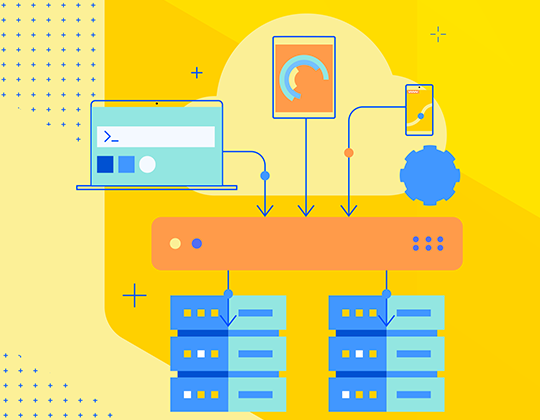Latest Stories

Understanding Application Delivery Controllers (ADC)
Discover the benefits of Application Delivery Controllers (ADC) for optimizing network traffic and enhance your performance and security.
by Kurt Jung

What Is a Reverse Proxy? Everything You Need to Know
Learn what a reverse proxy is, how it works and why your business needs one. Discover the benefits of using our free load balancer as a free reverse proxy.
by Kurt Jung

Round Robin Load Balancing Explained
Learn what round robin load balancing is, how it works, and why it's effective for managing network traffic. Discover DNS round robin, weighted variations and best practices for implementing it.
by Kurt Jung

Progress Kemp Free Load Balancer Versus HAProxy
Progress Kemp Free Load Balancer and HA Proxy Community edition are good if you want a free load balancer that provides core functionality at zero cost. So, what does each offer, and why should you choose one over the other?
by Kurt Jung

How To Set Up a Progress Kemp LoadMaster Free Load Balancer
In this blog, we'll break down the thought processes behind whether you should put a load balancer on your home network.
by Kurt Jung

Boost Your Homelab Setup with FreeLoadBalancer.com
For users looking to take their homelab to the next level, FreeLoadBalancer.com is an ideal option for bringing your enterprise load-balancing capabilities to homelab environments. With it, you can deliver a resilient application experience on over 100,000 global deployments while using the same core LoadMaster product and code.
by Kurt Jung
61f9a6de-54ed-4d5e-86af-54bc8bf41170.png?sfvrsn=7a457e30_1)
How Load Balancing Improves Your Application and API Performance
Learn implementation strategies for load balancers and understand their impact on application and API performance based on real-world use cases.
by Kurt Jung

Load Balancing Explained: The Proven Way to Make Your Applications Highly Available
Load balancing is a technology that helps organizations maintain high availability and performance for all their applications. This blog provides you with details to help your teams learn more about the features and benefits of load balancing.
by Kurt Jung

Progress Kemp LoadMaster: Load Balancing 101
In this blog, we’ll provide a high-level description of what load balancing is and how it works. Then we’ll highlight the restrictions placed on Free LoadMaster to differentiate it from the commercially licensed editions.
by Kurt Jung

DevOps – where software development and operations collaborate
A fresh and exciting concept is taking hold within software development and operation teams around the world.

Avoiding Silos with Cross Functional Teams
It’s quite common for organisations to be divided up into groups based on their function. For example, there could be groups for developers, server operations, product testing, a sales team, a marketing team, or many other groups, with a senior management layer above them.

PowerShell for DevOps Automation
Automating build and deployment processes is a central pillar of DevOps. When multiple builds are being deployed from Dev to Test to Production everyday it’s vital to automate as much as possible.